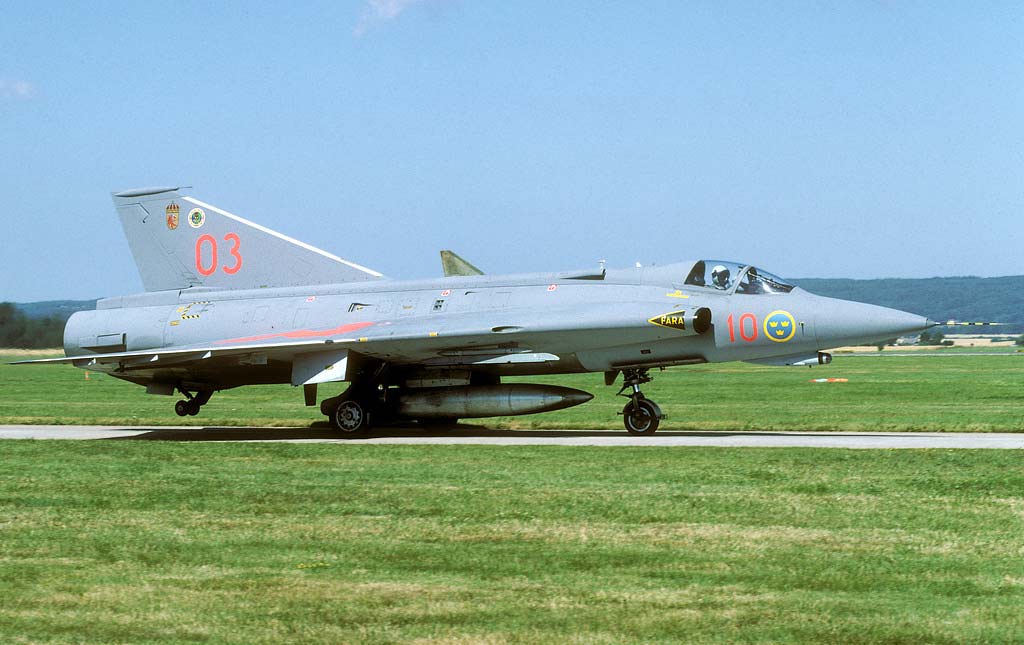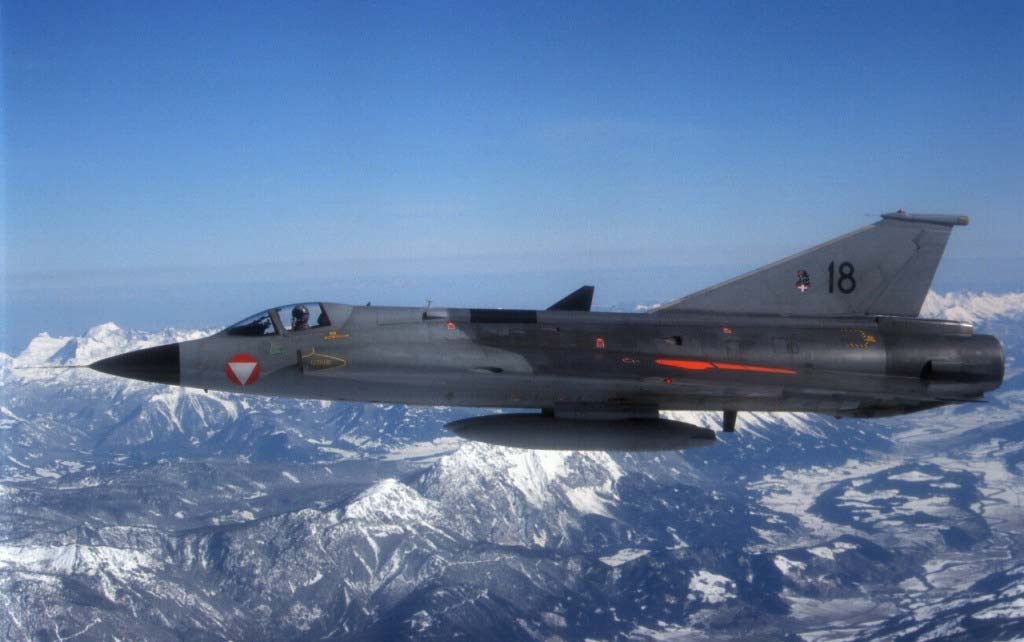The Saab J35 Draken (Dragon/Kite)is a Swedish supersonic fighter jet from the 60s, known for its double delta wing and distinctive performance.
In brief
The Saab J35 Draken, a revolutionary fighter jet developed by Sweden in the 1950s, was the first fully supersonic aircraft to be deployed in Western Europe. Its unique double delta wing design facilitated exceptional speed, agility, and performance at both high and low altitudes, making it a versatile aircraft for interception, reconnaissance, and ground attack roles. Powered by a single Volvo Flygmotor RM6B/C turbojet engine, the Draken could achieve speeds over Mach 2. With an operational range of approximately 1,000 miles and a service ceiling above 50,000 feet, the J35 was a formidable asset in air defense operations. Its armament included air-to-air missiles, a cannon, and in later variants, the capability to carry air-to-ground munitions.

Introduction
In the context of the Cold War, Sweden sought to develop an air defense system capable of countering the threat of Soviet bombers and fighters. The Saab J35 Draken was conceived to fulfill this need, with a design focus on supersonic speeds, high-altitude performance, and the flexibility to operate in diverse environments, including the near-Arctic conditions of Sweden. Launched by Saab in the early 1950s, the Draken’s development aimed to provide Sweden with an advanced, domestically-produced fighter jet. It first flew in 1955, embodying Sweden’s innovative approach to aerospace engineering and defense.
Design
The Saab J35 Draken’s most notable design feature is its double delta wing, which allowed for a wide range of speeds and altitudes, contributing to its exceptional maneuverability. The aircraft’s airframe was constructed to withstand the stresses of supersonic speeds, while its avionics and systems were advanced for the time, including innovations in radar and flight control. The Draken also featured a unique landing gear system designed for Sweden’s dispersed air bases, including short runways and highway strips.
The design offered significant advantages in terms of performance and operational flexibility but also presented challenges, such as increased landing speeds and complexity in maintenance and operation compared to its contemporaries.
Performance
The Saab J35 Draken excelled in speed, agility, and altitude capabilities, achieving a maximum speed of Mach 2.0 and operating at altitudes up to 66,000 feet. Its range and endurance were optimized for the defense of Sweden’s airspace, with provisions for in-flight refueling to extend its operational reach. The Draken’s performance in air-to-air combat and interception missions was highly regarded, demonstrating its capability to engage and defeat threats effectively.
Compared to other fighters of its era, such as the American F-104 Starfighter and the Soviet MiG-21, the Draken was competitive, offering a balance of speed, agility, and multi-role capability that was unique for a non-aligned country’s air force.
Variants
The Saab J35 Draken underwent several iterations, resulting in multiple variants:
- J35A/D/F: Initial and improved single-seat fighter versions with varying engine powers and armament configurations.
- J35B: An export variant with specific avionics and armament adjustments.
- SK35C: A two-seat trainer version, with dual controls for instruction.
- SF/SH/SF-37: Reconnaissance variants with specialized sensors and cameras for surveillance missions.
Each variant was tailored to specific roles within air defense and reconnaissance, reflecting the versatile design of the Draken platform.

Military Use and Combat
The Saab J35 Draken primarily served in the Swedish Air Force as a cornerstone of Sweden’s neutral air defense strategy during the Cold War. Its roles included air interception, ground attack, and reconnaissance, with notable effectiveness in high-speed interception and quick response to incursions. While the Draken did not engage in traditional combat operations, it participated in numerous international exercises, demonstrating its capabilities in NATO and Partnership for Peace activities.
The Draken was also exported to Austria, Denmark, Finland, and the United States (for training purposes), where it served with distinction. Over time, as newer technology and aircraft became available, the Draken was gradually phased out of frontline service, replaced by more modern fighters like the Saab JAS 39 Gripen.
The Saab J35 Draken represents a significant achievement in aviation history, showcasing Sweden’s innovative approach to aerospace engineering and defense autonomy. Its unique design, remarkable performance, and versatility across multiple roles underscore the Draken’s legacy as a pioneering supersonic fighter. While no longer in active military service, the Draken continues to be celebrated for its contributions to air defense and its role in advancing fighter jet technology.
Back to the Fighter Jet section.